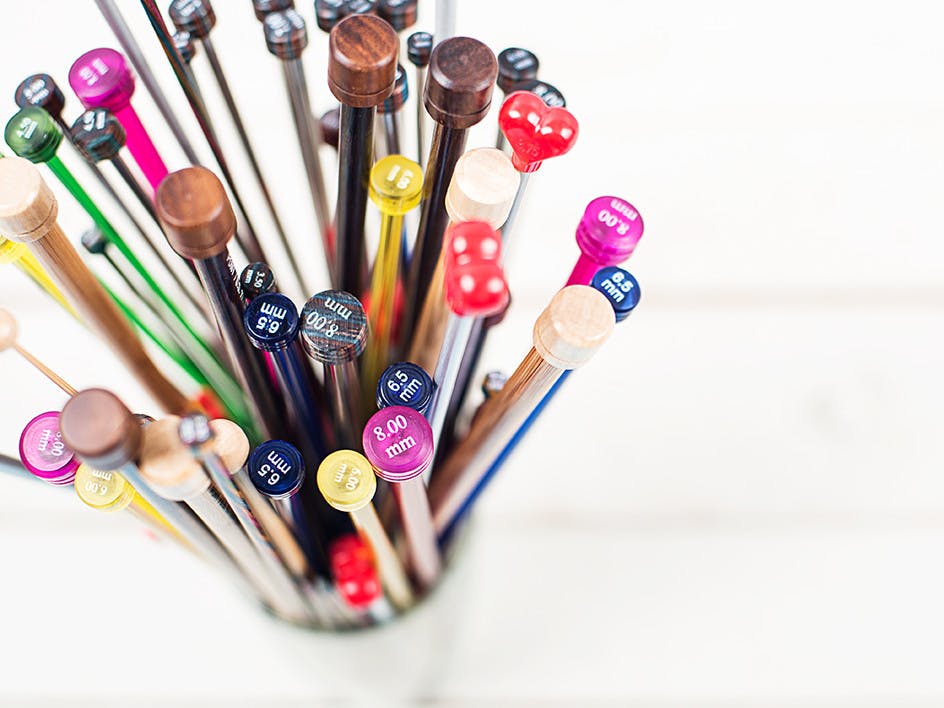How to use double pointed needles
Published on 10 March 2020 By Yaz 2 min read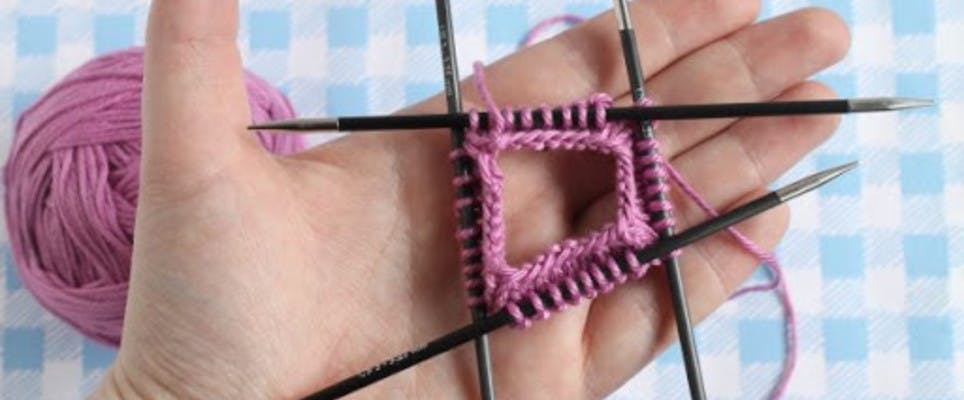
If you've always been just a little bit scared of double pointed needles, don't worry! Amy is here to reassure and teach you the basics.
I hear it all the time: "I could never use double pointed needles." I understand - but I believe in you! You just have to know the tips and tricks behind using double pointed needles, so you don't end up snapping them one by one in frustration.
Double pointed needles (DPNs) are used for knitting in the round. They are often used for socks, sleeves of jumpers and sweaters, and hats.
Before circular needles were invented, double pointed needles were the only way to go: knitted doilies could only be made by using eight double pointed needles in a circle, with a ninth working needle, and the old-school double points (or DPNs, for short) were upwards of twelve inches long!
Now, socks can be made on six-inch (15cm) DPNs, and once you can figure out the join and the fiddly first row, you will be knitting on double pointed needles left and right. However, I freely admit that there are some challenges to overcome.
How to knit with DPNs
1
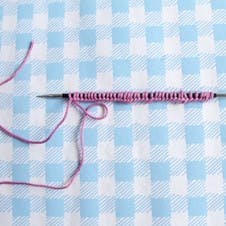
Cast on. First, it's best if you can cast on using one knitting needle if possible. If not, use a flat surface to help your needles behave the first few rounds.
Pro Tip
Beware of a 'twist'. Sometimes in a knitting pattern it might say: "Join to knit in the round, being careful not to twist". A 'twist' can happen in one of two places: when you cast on using more than one needle, or when you join the first and last cast-on stitch to knit in the round. If this happens, step 3 will explain how to avoid a twist when joining on DPNs.
2

Arrange the stitches. When arranging the stitches, slip the stitches purlwise from one needle to the next, and try to keep an equal number of stitches on each needle. When adding a new needle, be careful that the needle you just finished arranging does not dangle down and twist on you - this is why it is beneficial to use a table or other flat surface when casting on and arranging stitches.
3
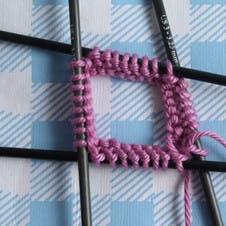
Join to knit in the round. Before you join to knit in the round, make sure that all of the stitches are facing the same way, so as not to twist when you join it. In the picture (left) you'll notice that all the bumps are facing in towards the centre of the square: that's what you want it to look like before you join on double pointed needles.
There are several ways to join. One way is to just start knitting, beginning with the first cast-on stitch. Another way is to cast one one extra stitch, and then knit the first and last cast-on stitches together on your first knit stitch.
4
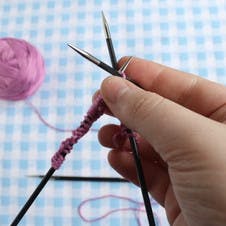
Start knitting. Then, as crazy as this may sound, just start knitting. Hold your first staging needle (the one with the stitches you are getting ready to knit) parallel to the ground, and just let the other three needles hang there. Seriously. As long as your cast-on stitches are not so loosey-goosey that the needles slip out, they will be fine. I promise.
5
Just knit! The first couple of rows with DPNs are a bit of a challenge, no matter how experienced of a knitter you are. Your cast-on stitches have zero stability, so the needles will all flop around a bit. Do your best to ignore the other three needles, and just concentrate on knitting with your immediate staging needle and your working needle. This will take a bit of practice because you will have to figure out where your hands want to be.
6
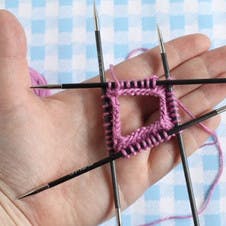
Moving needles. When you finish knitting the stitches on that first staging needle, your empty needle is ready to move onto the second staging needle. To prevent ladders in between the end stitches on each staging needle, knit the first stitch, and then give the yarn a bit of a tug when you insert the needle to knit the second stitch. You will find the yarn will snuggle right up, and the ladder will disappear.
Every time you finish knitting on a staging needle, slide the just-knitted stitches to the centre, to minimise their chances of slipping off the end.
Pro Tip
When you need to pause knitting. If you need to pack up your knitting for the day, wrap a rubber band to secure the needles on one end, so your project bag does not accidentally help you to pull a needle out of your stitches.
You don't ever have to become a double pointed needles expert, but it's valuable to be able to know how to use them. Sometimes, the magic loop technique is inconvenient. Other times, teeny circular needles are just too difficult to use. The more you use DPNs, the easier they get. Just keep at it and always remember to double-check for twisting. After the first few rounds, the needles will naturally start to fall into places and the world will make sense again.



